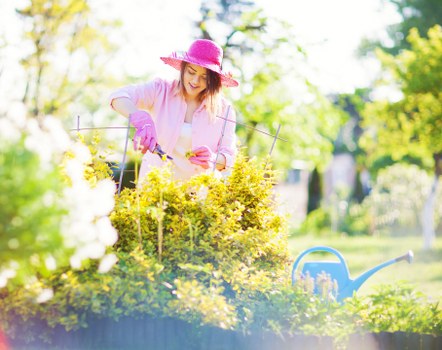Lawn Turf Installation Reading: Transform Your Outdoor Space

Are you dreaming of a lush, green lawn in Reading? Lawn turf installation can turn that dream into reality. Whether you’re looking to enhance your home’s curb appeal or create a perfect playground for your family, installing quality turf is a great investment. This guide will walk you through everything you need to know about lawn turf installation in Reading.
Understanding the benefits of a well-installed lawn is the first step. Not only does it provide aesthetic value, but it also contributes to a healthier environment. A green lawn can improve air quality, reduce soil erosion, and offer a comfortable space for outdoor activities.
Before you dive into the installation process, it’s essential to prepare your lawn properly. Proper preparation ensures that your turf takes root quickly and thrives in the long run.
Why Choose Lawn Turf Installation?

Opting for turf installation comes with numerous advantages. Here are some compelling reasons to consider:
- Instant Greenery: Achieve a beautiful, green lawn overnight without waiting for seeds to grow.
- Low Maintenance: Synthetic or high-quality natural turfs require less upkeep compared to traditional lawns.
- Durability: A well-installed turf withstands heavy foot traffic, pets, and varying weather conditions.
- Water Conservation: Many turf options use less water, making them an eco-friendly choice.
These benefits make turf installation an attractive option for homeowners in Reading looking to elevate their outdoor spaces.
Preparing Your Lawn for Turf Installation

Proper preparation is crucial for the success of your turf installation. Follow these steps to ensure a smooth process:
- Clear the Area: Remove any existing grass, weeds, rocks, and debris from the installation site.
- Grade the Soil: Ensure the ground is level to prevent water pooling. Proper grading promotes drainage and turf longevity.
- Soil Improvement: Add topsoil or compost to enrich the ground, providing a fertile base for the turf to establish.
- Compact the Soil: Use a roller or compactor to firmly settle the soil, eliminating air pockets that could hinder turf installation.
By following these preparation steps, you set the stage for a healthy and vibrant lawn that stands the test of time.
Selecting the Right Turf

Choosing the appropriate turf is essential for achieving the desired look and functionality. Here are some factors to consider:
Type of Grass
Different grass types suit various climates and usage levels. Common options include:
- Fescue: Ideal for shaded areas and cooler climates.
- Bermuda: Perfect for sunny spots and high-traffic areas.
- Kentucky Bluegrass: Offers a lush, dense lawn suitable for moderate climates.
Natural vs. Synthetic Turf
Decide between natural grass and synthetic alternatives based on your maintenance preferences and environmental considerations.
Natural Turf Benefits:
- Eco-friendly and supports local biodiversity.
- Provides a natural feel underfoot.
Synthetic Turf Benefits:
- Requires minimal upkeep.
- Long-lasting and resilient.
The Turf Installation Process

Installing turf involves several key steps. Here’s a comprehensive overview:
- Site Preparation: Clear and grade the area as previously described.
- Laying the Turf: Start at one end and lay the turf rolls, ensuring there are no overlaps or gaps.
- Seaming: Press the edges together and use turf nails to secure the seams.
- Rolling the Lawn: Use a roller to press the turf firmly into the soil, eliminating air pockets and ensuring good contact.
- Watering: Water the newly installed turf thoroughly to help it settle and start establishing roots.
Following these steps meticulously will result in a beautiful, durable lawn that enhances your property’s appeal.
Caring for Your New Lawn
Proper maintenance is vital to ensure your turf remains healthy and vibrant. Here are some care tips:
- Regular Watering: Keep the turf moist, especially during the first few weeks after installation.
- Mowing: Trim the grass to the recommended height to promote growth and prevent weeds.
- Fertilizing: Use appropriate fertilizers to provide essential nutrients.
- Weed Control: Implement measures to prevent and manage weed growth.
Consistent care will help your lawn thrive, providing a beautiful and functional outdoor space for years to come.
Common Mistakes to Avoid
Avoiding common pitfalls can make your turf installation a success. Here are some mistakes to watch out for:
- Poor Site Preparation: Skipping proper clearing and grading can lead to issues like uneven surfaces and poor drainage.
- Improper Turf Selection: Choosing the wrong type of turf for your climate or usage can result in poor growth and maintenance challenges.
- Inadequate Watering: Not watering enough can prevent the turf from establishing roots effectively.
- Overlapping Turf: Leaving gaps or overlaps during installation can create unsightly seams and weak points.
By being mindful of these common errors, you can ensure a smooth and successful turf installation process.
Local Considerations in Reading
Reading has its unique climate and soil conditions that can affect turf installation. Here are some local factors to consider:
- Climate: Reading experiences a temperate climate with distinct seasons. Choose turf types that can withstand both hot summers and cold winters.
- Soil Quality: The soil in Reading varies, so conducting a soil test can help determine necessary soil amendments.
- Rainfall: Adequate drainage is essential to handle Reading’s rainfall patterns and prevent waterlogging.
Taking these local aspects into account will help you select and maintain turf that thrives in Reading’s environment.
Serving the Surrounding Areas
Our lawn turf installation services extend beyond Reading to the surrounding areas. Here are some of the nearby locations we proudly serve:
- West Reading: Known for its residential neighborhoods, perfect for family lawns.
- Tilehurst: Offers a mix of urban and green spaces ideal for turf installation.
- Tile Cross: A bustling area where a neat lawn can enhance property value.
- Green Park: Known for its green initiatives, aligning perfectly with our sustainable turf options.
- Katesgrove: A community eager to transform their outdoor spaces with quality turf.
- Emmer Green: Combines rural charm with modern lawn needs.
- Heath End: A neighborhood where a lush lawn can add significant curb appeal.
- Sonning Common: Offers diverse landscaping opportunities for turf installation.
- Datchet: Rich in history, where a well-maintained lawn complements the area's aesthetic.
- Earley: A vibrant community perfect for installing durable and beautiful turf.
Each of these areas has unique characteristics, and our expertise ensures that your turf installation meets the specific needs of your location.
Conclusion
Investing in lawn turf installation in Reading is a smart choice for enhancing your property’s beauty and functionality. By understanding the benefits, preparing your lawn properly, selecting the right turf, and following a meticulous installation process, you can enjoy a stunning and resilient lawn for years to come.
Remember to consider local factors and avoid common mistakes to ensure your turf thrives. Whether you’re in Reading or one of the nearby areas, professional turf installation can transform your outdoor space into a lush, inviting haven.
Frequently Asked Questions
1. How long does turf installation take?
The installation process typically takes one to two days, depending on the size of the area and the condition of the site. Professional installers can ensure the job is done efficiently and correctly.
2. How much maintenance does a new turf lawn require?
A newly installed turf lawn requires regular watering, especially in the first few weeks. After establishing, maintenance involves occasional mowing, fertilizing, and weed control to keep the lawn healthy and vibrant.
3. Can I install turf myself, or should I hire professionals?
While DIY turf installation is possible, hiring professionals ensures that the job is done correctly, with proper site preparation and installation techniques. Professional installation can lead to a more durable and aesthetically pleasing lawn.
4. What types of turf are best for the Reading climate?
Grass types like Fescue, Bermuda, and Kentucky Bluegrass are well-suited for Reading’s temperate climate. These varieties can withstand the region’s seasonal changes and provide a lush, green lawn.
5. How do I choose between natural and synthetic turf?
Consider factors like maintenance preferences, environmental impact, budget, and desired aesthetic. Natural turf offers a traditional look and environmental benefits, while synthetic turf provides durability and requires less upkeep.